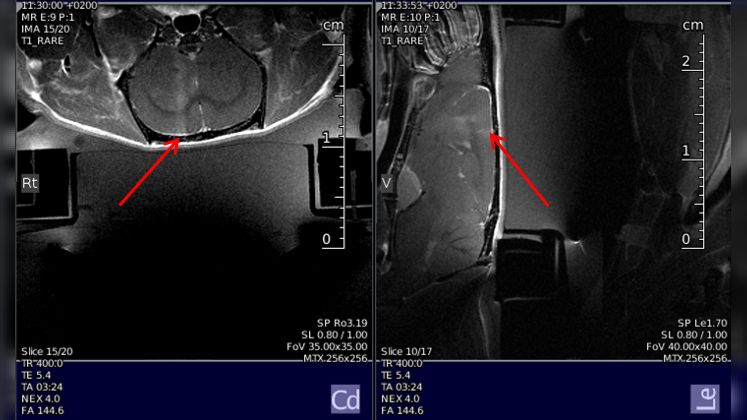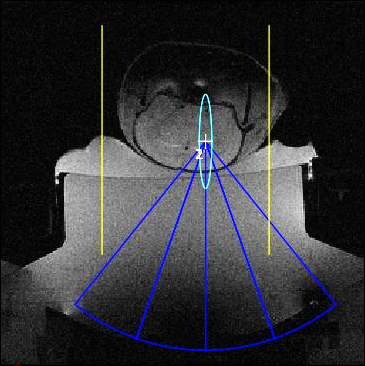Applications of focused ultrasound (FUS)

Blood–Brain Barrier Opening:
Focused ultrasound (FUS) uses acoustic waves precisely targeted to a small region of the brain. When microbubbles are injected into the bloodstream, they circulate and reach the cerebral vessels. The ultrasound causes these microbubbles to oscillate (expand and contract) in the blood vessels, creating mechanical forces on the vessel walls. This temporarily disrupts the tight junctions between endothelial cells, opening the blood–brain barrier (BBB) in a localized, reversible, and controlled manner. This allows therapeutic molecules to cross from the bloodstream into the brain in a controlled and targeted manner. The BBB then gradually closes over several hours, restoring its normal protective function.
 FUS cradle with installed transducer and acoustic window (orange frame)
FUS cradle with installed transducer and acoustic window (orange frame) Transducer positioning to define the ROI for sonication and Blood–Brain Barrier opening.
Transducer positioning to define the ROI for sonication and Blood–Brain Barrier opening.Thermal Modulation:
Focused ultrasound (FUS) can induce localized tissue heating, while MRI provides real-time thermal maps. This enables precise monitoring and control of tissue temperature within a defined region of interest. Essentially, FUS delivers energy to a targeted area, causing controlled temperature changes, which can be used for therapeutic or experimental purposes without affecting surrounding tissue.
 Relative temperature change in the phantom during localized heating (top image). The graph shows the temperature change over time within the ROI at the center of the phantom.
Relative temperature change in the phantom during localized heating (top image). The graph shows the temperature change over time within the ROI at the center of the phantom.